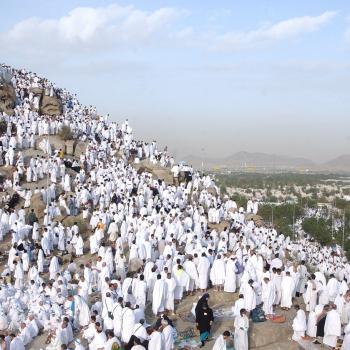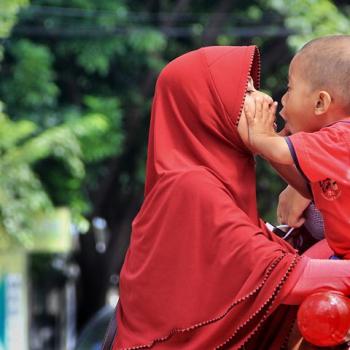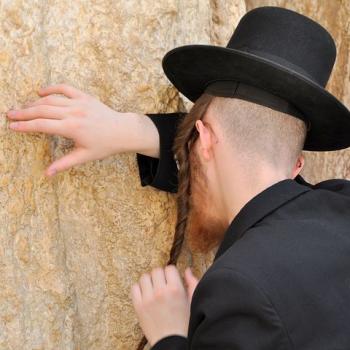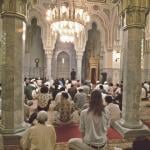 Jihad and Hijab are probably the two most talked about conversations about Islam and Muslims.
Jihad and Hijab are probably the two most talked about conversations about Islam and Muslims.
They are also the two most misunderstood or poorly understood.
Jihad was addressed on one of my prior posts. This post will focus on the myths around hijab.
I would state at the outset that I am not a Muslim jurist. Many Muslim jurists have different interpretations of “hijab” and more specifically on the extent of what body part/s should be covered. In its extreme form, it is called Niqab, which calls for covering the entire body that includes the hands and the face. This is commonly seen in Saudi Arabia and other countries with Saudi influence.
Others opine that the face and hands may not be covered. Still others call for more liberal interpretation.
The American olympian, Ibtihaj Muhammad brought further attention by competing in 2016 Olympics wearing a hijab , recently unveiling a hijabi barbie, as featured in Dilshad Ali’s recent post.
But many myths still exist about Hijab. The three myths outlined here exist even in the minds of the Muslims. Hijab has been used interchangeably with headscarf or head covering. Hijab literally means something that stands between two things or something that covers or conceals something from another. It is understood to be a ‘barrier’, a ‘veil’ or a ‘curtain’.
The word hijab or its derivatives have been used seven times in the Qur’an but never in connection with the way it is commonly understood currently. For example, it has been used to mean barrier, veil or screen.
Veil between Heaven and Hell:
And between the two there shall be a veil, and on the most elevated places there shall be men who know all by their marks, and they shall call out to the dwellers of the garden: Peace be on you; they shall not have yet entered it, though they hope. 7:46
Barrier between the Prophet and unbelievers:
And when you recite the Quran, We place between you and those who do not believe in the hereafter a hidden barrier. 17:45
In a verse widely recognized as the one that calls for covering their body, is noted here.
O Prophet! Tell your wives and daughters, and the believing women, that they should cast their outer garments over their persons (when abroad): that is most convenient, that they should be known (as such) and not molested. And Allah is Oft-Forgiving, Most Merciful. 33:59
Myth#1
Hijab is a dress code only.
Hijab is commonly thought of a Muslim woman wearing a headscarf and is probably the most identifiable feature for a Muslim woman.
Oxford Encyclopedia has two definitions for hijab. The first one states:
A head covering worn in public by some Muslim women.
It is the second definition that really does define the essence of hijab.
The religious code which governs the wearing of the hijab.
As noted above, the Qur’an uses the term hijab or its derivatives seven times but never in connection with the headscarf that we have become accustomed to. It rather calls for a code of modesty. There aren’t very many verses that address the modesty specifically. This code of modesty calls for covering women’s body appropriately when in public or other men who are not mehram. (Mehram includes men who a woman cannot marry such as father, son, brothers etc. Husbands are obviously mehram.)
And tell the believing women to lower their gaze and to be mindful of their chastity, and not to display their charms (in public) beyond what may (decently) be apparent thereof; hence, let them draw their head-coverings over their bosoms [chest]. And let them not display (more of) their charms to any but their husbands, or their fathers, or their husbands’ fathers, or their sons, or their husbands’ sons, or their brothers, or their brothers’ sons, or their sisters’ sons, or their womenfolk, or those whom they rightfully possess, or such male attendants as are beyond all sexual desire, or children that are as yet unaware of private aspects of women; And let them not swing their legs [in walking] (or strike their feet) so as to draw attention to their hidden charms [or ornaments]. And O you believers—all of you—turn unto God in repentance, so that you might attain to a happy state! 24:31
The word Khumur is used to refer to the head coverings.
Hijab in Islam is therefore much more than covering the head or other body parts. In other words, it would not make sense for a woman to wear the headscarf (‘hijab’) but have heavy make up with the intention to sexually attract men, or make suggestive gestures. That would be against the spirit of hijab.
As mentioned in my book, The Three Abrahamic Testament:
The Qur’an considers sexuality sacred and sets rules for its expression. Sexuality is limited to a marital relationship and has no place in public, nor is there ever a reason for a public display, which may lead to sensual feelings and eventually immorality, which the Qur’an (and the Bible) detests.
Next: Hijab is meant for women only












